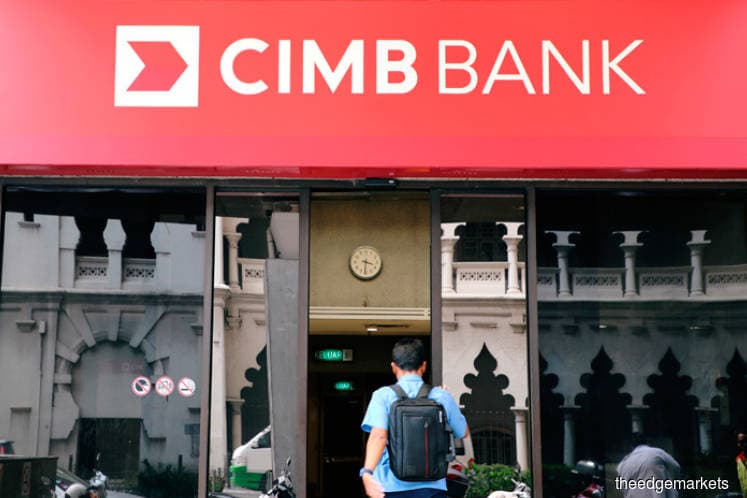
This article first appeared in The Edge Malaysia Weekly on March 2, 2020 - March 8, 2020
MALAYSIAN banks’ earnings in the final quarter of last year were largely within analysts’ expectations, but they warn of weaker prospects ahead due to uncertainties over how long the Covid-19 outbreak and the country’s political turmoil will last.
Additionally, most banks expect that there will be another cut this year in the overnight policy rate (OPR), which will weigh further on their net interest margin (NIM). Bank Negara Malaysia will be holding its next monetary policy meeting on Tuesday.
“Many of the banks are still uncertain as to what the impact of the virus outbreak will be. So far, they are saying they have not been significantly impacted, but they have had borrowers coming in to ask for moratoriums [on their loan payments] and to restructure and reschedule their loans, which the banks are prepared to do if necessary. Of course, the political uncertainties now don’t help,” Ahmad Ramzani Ramli, a banking analyst at Kenanga Research, tells The Edge.
The government’s RM20 billion economic stimulus package, announced last week, is only expected to filter through to the economy in the second half of the year.
“I have to be realistic. I think this year will be challenging for the industry, coupled now with the Covid-19,” Tengku Datuk Seri Zafrul Aziz, group CEO of CIMB Group Holdings Bhd, the second largest banking group, said after its results briefing last Friday.
Analysts say another cut in the OPR will affect Alliance Bank Malaysia Bhd and BIMB Holdings Bhd the most as they have the highest proportion of floating-rate loans.
Of the nine major banking groups that are listed, the three that grew the most strongly in net profit for the quarter on a year-on-year basis were BIMB (up 12.1%), RHB Bank Bhd (9.8%) and AMMB Holdings Bhd (9.2%).
Another three posted y-o-y declines, namely CIMB (-24%), Affin Bank Bhd (-15%) and Alliance Bank (-10%), while the remaining three saw tepid growth.
CIMB’s 4Q2019 earnings, on a business-as-usual (BAU) basis — that is without one-off transformational costs and disposal gains — fell 6.4% y-o-y and 17.6% quarter on quarter to RM1.04 billion. Revenue, however, grew a strong 11% to RM4.52 billion.
For the full year, its net profit fell 18.3% to RM5.58 billion, while on a BAU basis, it grew 7.7% to RM5.01 billion.
Analysts say CIMB’s earnings came in below expectations, mainly because of higher provisions. Provisions grew 14.5% y-o-y and 50% q-o-q, mainly owing to Indonesian corporate loans. The group’s gross impaired loan (GIL) ratio as at end-December improved slightly to 3.1% from 3.2% three months earlier.
In contrast, Malayan Banking Bhd’s (Maybank) fourth-quarter net profit, up 5.3% y-o-y and 22.5% q-o-q, came in slightly above expectations, mainly because provisions were lower than what analysts had expected.
Provisions fell 65.1% q-o-q. Loan growth, at just 1.2% y-o-y, was among the lowest for banks.
Even Public Bank Bhd, normally an industry-beater, saw tepid earnings growth in the final quarter, with net profit up just 0.04% on a y-o-y basis and 3.2% q-o-q.
On a top-line basis, AMMB did particularly well in the quarter as net income grew 15.6% to RM1.1 billion. Meanwhile, Hong Leong Bank Bhd’s loan growth stood at 7.3% as at its half year, while it maintains solid asset quality, with the GIL ratio at 0.84%. Its management now forecasts loan growth of 6%-6.5% from 5%-6% previously.
Higher dividends
A key trend among the banks this quarter was higher dividends, ostensibly to entice investors to their shares — bank shares have been among the hardest hit amid these uncertainties — or to reward shareholders for sticking it out with them. Year to date, the Bursa Malaysia Financial Services Index has shed 7.3%, slightly worse than the FBM KLCI’s 6.7% decline.
RHB Bank, in particular, announced a final dividend per share of 18.5 sen — or 60% of its 2HFY2018 net profit — compared with 13 sen a year ago. This took the full-year DPS to 31 sen from 20.5 sen a year ago, representing a new high in terms of the payout ratio of 50.1% versus 35.7% a year earlier.
As for Maybank, it proposed a final cash DPS of 39 sen, bringing the year’s total amount to 64 sen in cash — an attractive yield of 7.5% — and a payout ratio of 88% compared with its historical average of 77%.
However, the bank’s management has indicated that this high payout is a one-off and it is likely to go back to the bank’s usual practice of having a dividend reinvestment plan option.
“We have pencilled in an 80% payout ratio in our forecast, implying a yield of 6.7%,” UOB Kay Hian Research states in a report last Friday.
It is worth noting that Affin Bank proposed a higher dividend of 7 sen for the quarter despite net profit falling 15% y-o-y to RM122.1 million.
Save by subscribing to us for your print and/or digital copy.
P/S: The Edge is also available on Apple's AppStore and Androids' Google Play.